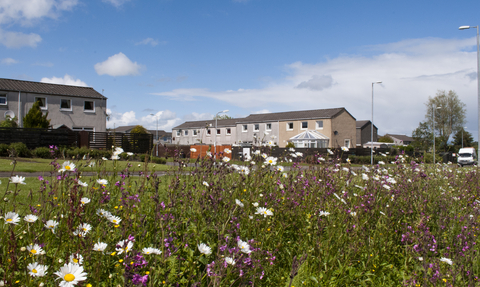
© Katrina Martin / 2020VISION
What is a Local Plan?
Local Plans are used by local authorities to guide how their district will develop over the next 15-20 years.
These allow councils to ensure that developments in the area will contribute to the specific needs and priorities of their communities.. Any planning applications or development proposals in the area must comply with the policies set out in the Local Plan.
If you would like to know more about planning applications, click here.
Local Plans will be based on relevant evidence and data about the area, and will recognise the distinctive characteristics of the area. This means that each Local Plan will be different, but they all follow a similar format.
Local Plans are made up of different documents, including supporting documents which provide evidence and research. These will include a Sustainability Appraisal and an Equality Impact Assessment.
The main document will include the Council's vision for the district, the core policies that guide this and the strategy for delivering on the Local Plan. Policies will include general district policies as well as those based on specific areas and allocations for land use.
What does Gloucestershire Wildlife Trust do?
We have an experienced team who thoroughly evaluate and respond to Local Plan consultations to ensure that policies that protect wildlife are fully integrated throughout Local Plans and the supporting evidence.
We encourage our supporters to respond to Local Plans, using their experience of wildlife and expertise in different areas to ensure positive contributions for nature that span the area covered by the Local Plan.
We have developed a Nature Recovery Network map, which displays where high priority areas of wildlife can be protected. You can find out more about Nature Recovery Zones here, or take a look at the local map here. We encourage Nature Recovery Network maps to be included as part of the evidence base for Local Plans, to ensure that high priority areas of wildlife are properly protected.
What can you do?
Some policies in Local Plans will have an impact on wildlife, and we encourage local residents to engage with the development and consultation of Local Plans to ensure that there are plans in place to protect wildlife and enhance wild places.
There are many stages to the process of a Local Plan. Local communities, individuals, and businesses should be engaged with throughout the process. It is good to keep informed about whether your local authority is currently consulting on their Local Plan by checking their website, which you can find here.
When providing feedback on a Local Plan, don't worry about whether you have expertise in planning, as staff within the council will be able to interpret and translate your comments into planning language. However, if you do have knowledge in a certain area, do mention and use it in your feedback.
What policies might be included to protect nature?
- The 2021 Environment Act made it mandatory that all developments (up to a certain sign) must have a Biodiversity Net Gain of 10%. This means that developments must show that they are improving the biodiversity of the area by incorporating it into their developments or offsetting the impact in another part of the district.
- Local authorities can increase the mandatory minimum of Biodiversity Net Gain in their area.
- Enhancing and protecting biodiversity can be encourage through a development approach that includes good provision of green space and green infrastructure.
- Applications to accreditations that promote the sustainable developments, such as Building With Nature, can be recommended or required through a Local Plan. To find out more about Building With Nature, click here.
Are there any Local Plans currently in consultation in Gloucestershire?
You can see the Local Plans for your district by following these links:
Forest of Dean District Council
Cheltenham Borough Council, Gloucester City Council and Tewkesbury Borough Council have also worked together to produce a Strategic and Local Plan, which is an overarching strategy to cover a wider area, as well as local policies within each authority. You can learn more about the Strategic and Local Plan here.
